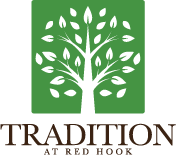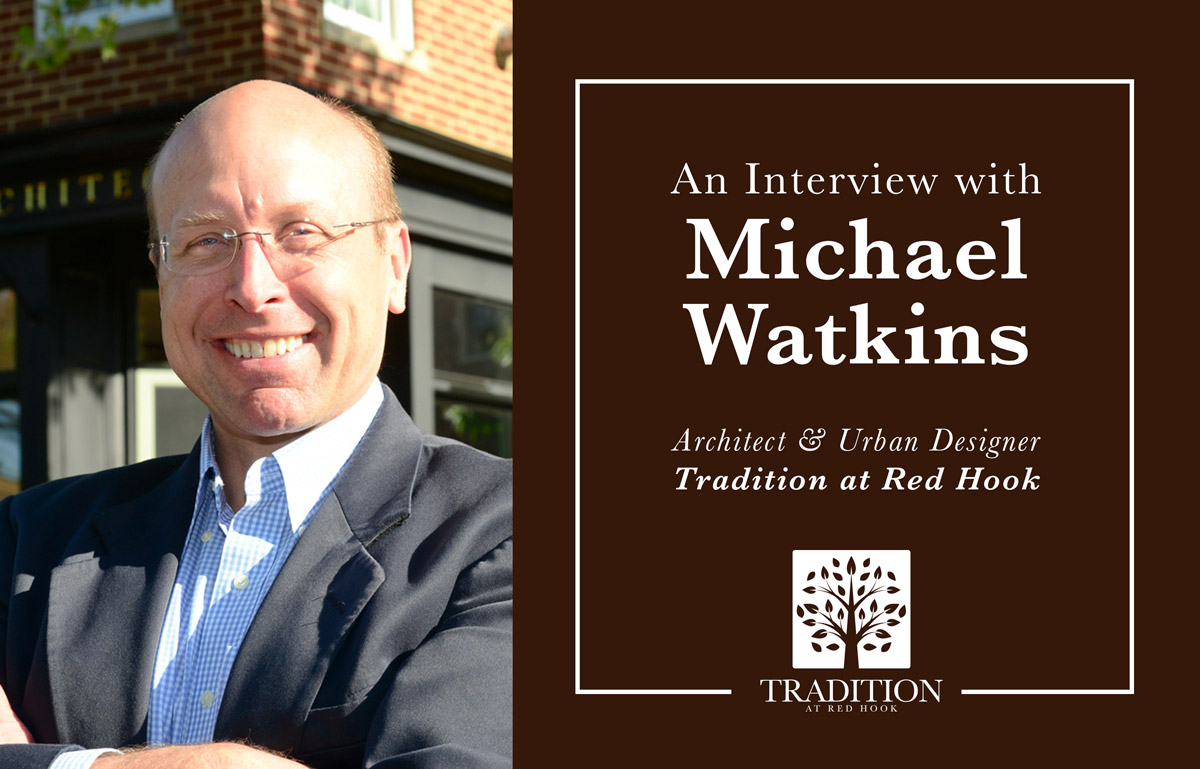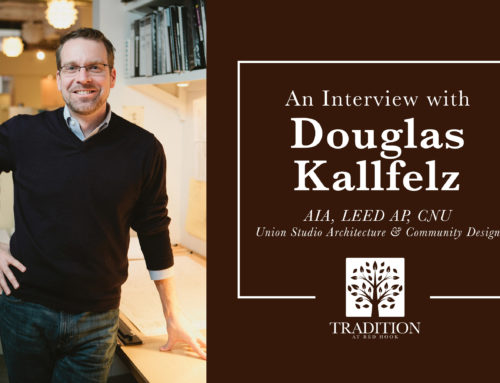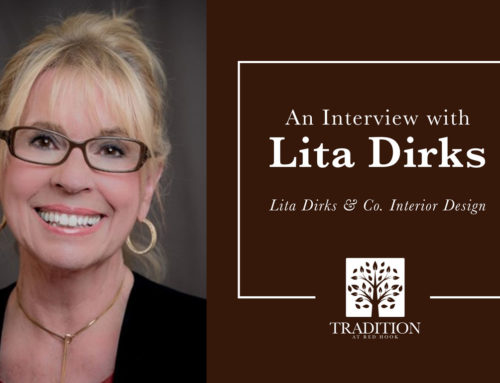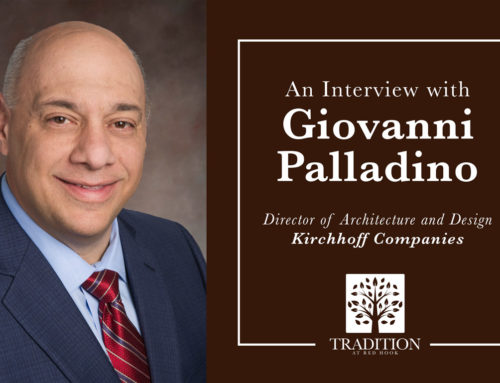With an educational background and early professional experience in architecture as his foundation, Michael Watkins began designing walkable neighborhoods over 30 years ago. He exudes joy as he speaks about what it was like to share his passion and expertise as the Urban Designer for Tradition at Red Hook. More of his thoughts here:
What prompted your shift from architecture to designing communities like Tradition at Red Hook?
About 30 years ago, I was seeing a lot of work by Duany Plater-Zyberk & Company (DPZ) published and found a very clear, rational basis for their designs. I landed a job with them just as their focus was shifting from architecture to urban design, so I made the shift as well. It’s been very rewarding; I absolutely love the work. And my architecture experience and education was good training because we’re still designing spaces and places – they’re just outdoors!
What are the key principles behind a Traditional Neighborhood Development (TND)?
Pier Carlo Bontempi was quoted as saying, “Tradition is innovation that has succeeded.” ”Traditional neighborhood” doesn’t mean neighborhoods that replicate the past in a nostalgic manner. It’s about choosing the best ideas that have worked well over time and replicating those while simultaneously innovating to meet today’s needs of daily living. Consider the fact that for many centuries, walkable neighborhoods were the norm—because we didn’t have cars. It wasn’t until the widespread use of automobiles that we began designing “collector” roads and subdivisions. Because planning centered around the car, these subdivisions became much less walkable – and eventually, not walkable at all. You had to have a car to buy food, educate your kids, maintain a job; walking was not an option. Designing places around the needs of pedestrians is a key principle behind Tradition at Red Hook. That, along with being compact, mixed-use, and of course shaping a village-like environment that really fosters community.
Tell us about the planning process involved to make a place like Tradition at Red Hook come to life.
It’s complex, but not difficult. We look at the traditional patterns of the region in which we’re working. In this case, the Hudson River Valley is full of fabulous walkable communities; you don’t have to look far! We take lessons from all of those places. We also work with folks who understand the market in terms of desired housing sizes and types, and we use that information to inform our design. In the case of Red Hook, we looked for ways to prepare a master plan that would grow in a manner consistent with the existing patterns of Red Hook.
What keeps you inspired throughout the multi-layered process of planning?
The team! When you collaborate with someone like Giovanni Palladino, the Director of Architecture and Design for this effort, it’s very inspiring because he doesn’t just focus on building a development. He understands the value of place and community and is inspired by that himself. It takes a community to build a community. It takes people who appreciate and value relationships with other people to turn around and build a place that fosters the growth of those kinds of connections.
What, do you feel, are some of the most important and deliberate decisions you and your team made as you envisioned Tradition at Red Hook?
One of the things I really appreciated throughout the process is that the founders wanted the public realm to take priority in the design. The Community Green at Tradition at Red Hook was not an accident. It was a priority for them to create a beautiful, welcoming open public space that could be enjoyed by everyone: not just those who live in the community of Tradition, but everyone in the town as well. We also included smaller pocket parks throughout the neighborhood that will be especially great for families with small children. In addition, embedded into the plan was a very sensitive treatment of how the edge of the neighborhood would look, not just from inside Tradition but for those walking by as well. We wanted to be sure that we opened connections to views and trails for everyone, whether or not they live in one of the Tradition homes, and that it would be easy for people to walk or bike through. And, of course, we included a wide variety of residential types; this is not a place where the same house is built and repeated. Each one is unique, which gives us a chance to build a more diverse and interesting community.
Despite technology giving us the sense that we’re connected, it seems that people are really yearning for a sense of belonging. Please comment on why people benefit from the sense of community that marks the TND experience, particularly in the digital age.
I think we benefit from the walkable neighborhood and being out in the public realm more than ever because of the pressure to be connected digitally. It’s so refreshing to put down the smartphone and simply have a real conversation with someone. In a neighborhood, because you live and work in close proximity to others, you see people frequently enough to really feel in touch with what’s going on in their lives. You get so much more in conversation than you do from a post. So much of social media allows us to witness what’s going on in someone’s life but not necessarily be an integral part of it. Living in a neighborhood leads to the sense that everyone is really interconnected; the involvement with other people is more active and forges deeper bonds.
What impact do you expect this project to have on the broader community?
When a new neighborhood is added to an existing town, it’s like the new kid that shows up in class on the first day. They’re a novelty; you’re not quite sure how they fit into your group yet – there’s a period of getting to know one another that needs to take place. But that phase passes very quickly and suddenly they become an integral part of your life. Very quickly, someone who is new to the area and moves to Tradition at Red Hook will be running for town council or running the boy scout troop and they’ll become part of the community. Or, perhaps someone who has long lived in the town moves into Tradition and is out walking around more than before because he or she doesn’t have to drive to get errands done, so you see more of that person. Undoubtedly, the group of people who live at Tradition at Red Hook will be big supporters of village businesses. They’ll shop there, they’ll work there, and their kids may work there. This is all the natural result of growth. Tradition at Red Hook is a healthy form of growth because it’s really an extension of the town’s own pattern.
What are the benefits of a TND to our environment?
The obvious, of course: the walkable neighborhood provides an alternative to the car. Whether you’re out getting exercise, getting kids to school, or running out to do errands, being able to walk is healthier for people and for the environment. And neighborhoods like Tradition at Red Hook also take up less land. People live compactly and have a relatively small footprint. By moving to a place like this, they’re responding to environmental issues in a thoughtful and responsible way.
Can you tell me what you most love about this particular development?
Definitely the prioritization of the public realm, first and foremost. Secondly, I love that it is connected to an existing community; it really feels like an extension of a wonderful town. Can you comment on the choice of a historic small town as the center of this effort and the fact that a TND sort of mimics that quintessential small-town America feel? As we look back, say a century from now…..maybe not even that long…..and consider the history of urban development in this country, I think we’ll find that auto-oriented sprawl ends up being a blip. We’re right on the heels of conventional suburban development, so while we tend to think it’s the norm, if you look at the longer trajectory, towns like Red Hook showcase the kind of long-term development that really represents our country. The fact that villages like Red Hook are viewed as a model that we’re emulating should come as no surprise.
Do you expect more of these TNDs to pop up in the Hudson Valley, and why?
Yes, I do. There’s a large contingent of the population that prefers to live in a walkable community. And Tradition will be the model people who are planning smart development will point to – the destination for those who want to figure out how to grow sensibly. I think it will play an important role in the Hudson Valley.
If you were to move to Tradition at Red Hook, what style home would you pick, and why?
A townhouse on the Green – less space, more free time! And I love the idea of living there. The fact that someone else maintains my yard and that I can greet neighbors from my front porch. There are some great options – the apartment over the garage would be nice too.
